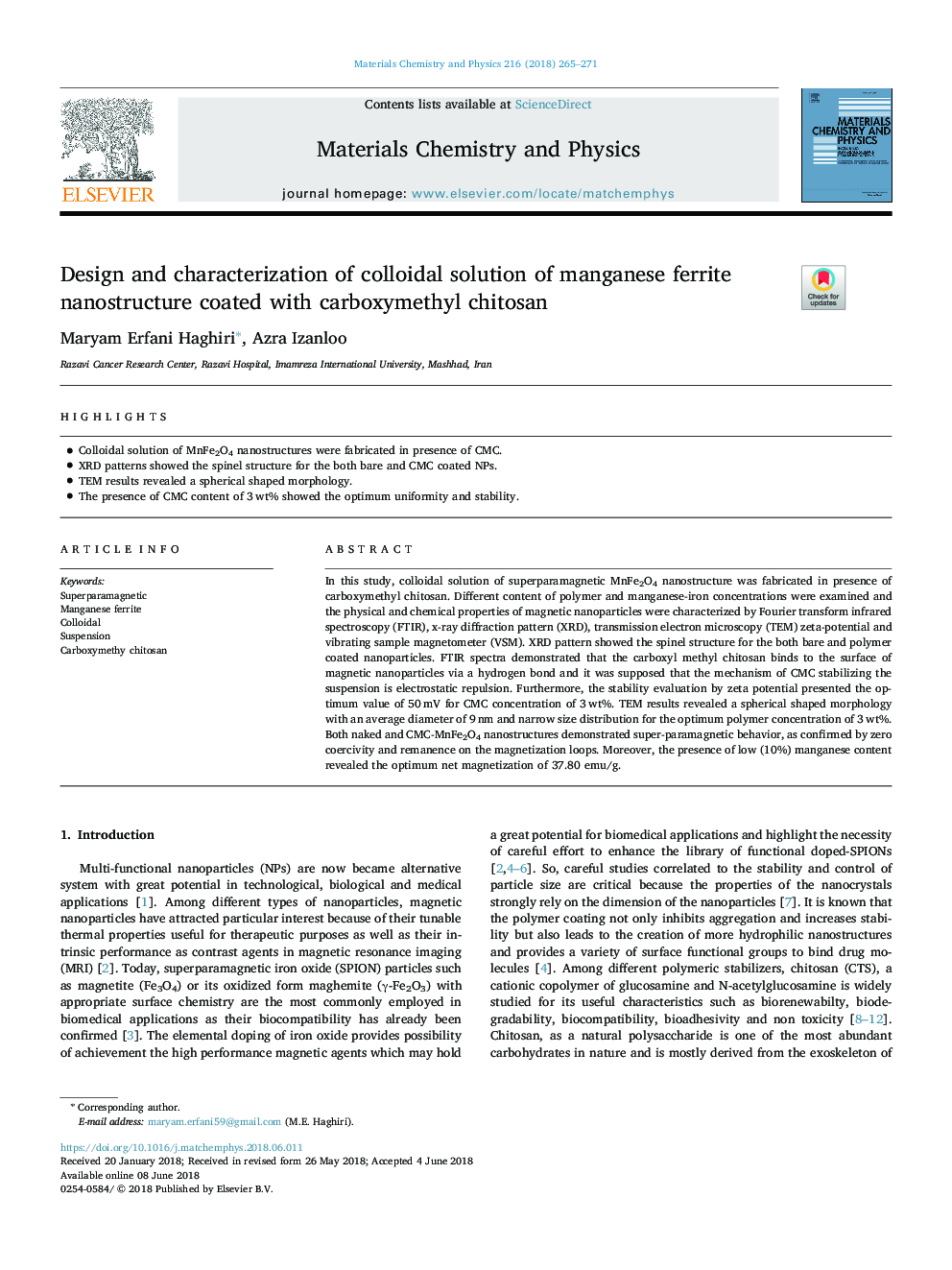| Article ID | Journal | Published Year | Pages | File Type |
|---|---|---|---|---|
| 7921302 | Materials Chemistry and Physics | 2018 | 7 Pages |
Abstract
In this study, colloidal solution of superparamagnetic MnFe2O4 nanostructure was fabricated in presence of carboxymethyl chitosan. Different content of polymer and manganese-iron concentrations were examined and the physical and chemical properties of magnetic nanoparticles were characterized by Fourier transform infrared spectroscopy (FTIR), x-ray diffraction pattern (XRD), transmission electron microscopy (TEM) zeta-potential and vibrating sample magnetometer (VSM). XRD pattern showed the spinel structure for the both bare and polymer coated nanoparticles. FTIR spectra demonstrated that the carboxyl methyl chitosan binds to the surface of magnetic nanoparticles via a hydrogen bond and it was supposed that the mechanism of CMC stabilizing the suspension is electrostatic repulsion. Furthermore, the stability evaluation by zeta potential presented the optimum value of 50â¯mV for CMC concentration of 3â¯wt%. TEM results revealed a spherical shaped morphology with an average diameter of 9â¯nm and narrow size distribution for the optimum polymer concentration of 3â¯wt%. Both naked and CMC-MnFe2O4 nanostructures demonstrated super-paramagnetic behavior, as confirmed by zero coercivity and remanence on the magnetization loops. Moreover, the presence of low (10%) manganese content revealed the optimum net magnetization of 37.80 emu/g.
Related Topics
Physical Sciences and Engineering
Materials Science
Electronic, Optical and Magnetic Materials
Authors
Maryam Erfani Haghiri, Azra Izanloo,
